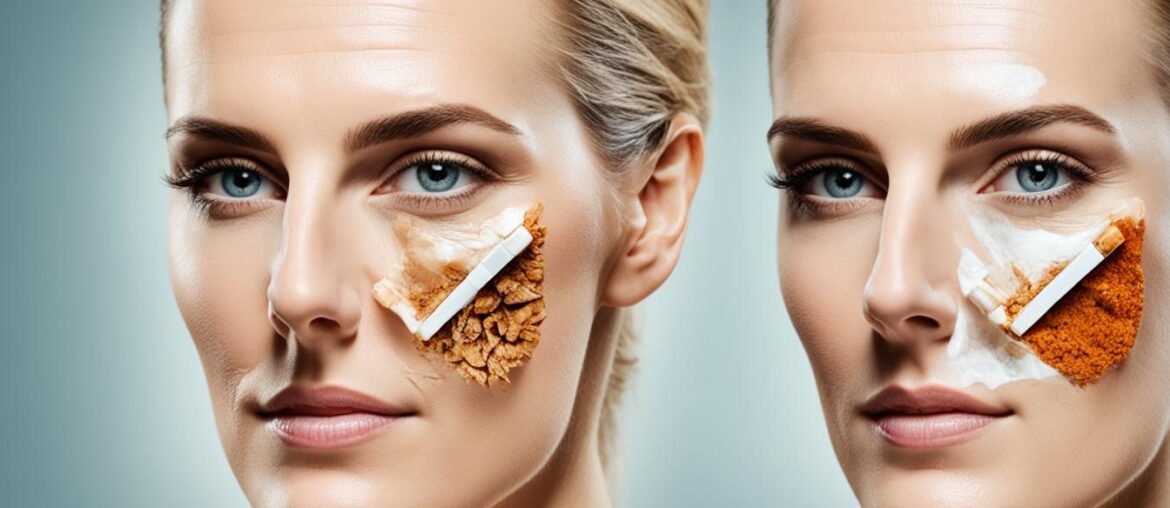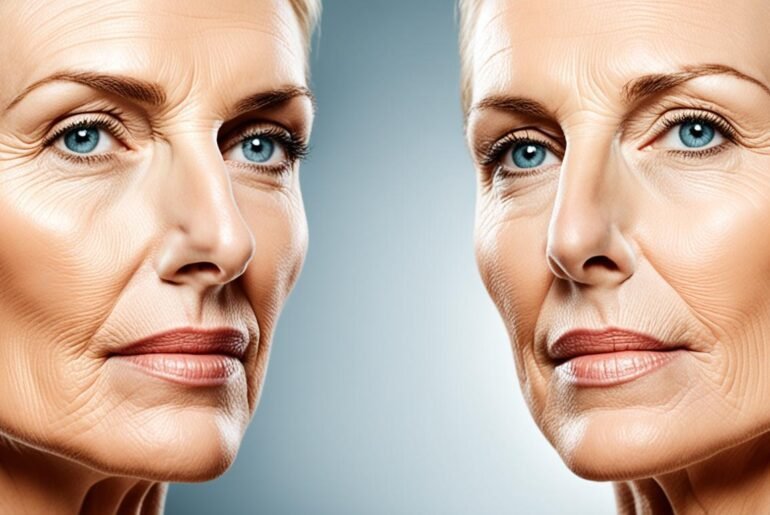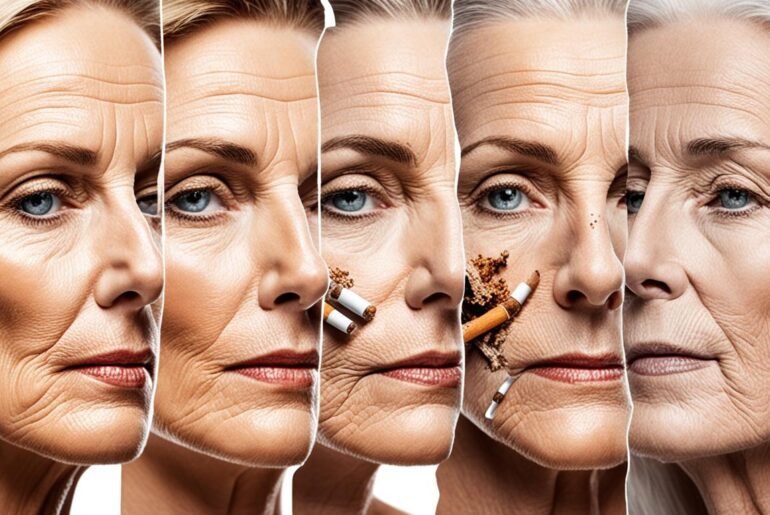Did you know that the damaging effects of smoking on the skin can be reversed? When you quit smoking, your skin has the incredible ability to repair itself and regain a healthier and younger-looking complexion. So, if you’ve been looking for another reason to quit smoking, the condition of your skin may just be it.
Smoking can have a significant impact on your skin health, causing long-term skin disorders and premature signs of aging. The toxins in cigarettes, such as nicotine and carbon monoxide, expose your skin to over 4,000 harmful chemicals, leading to a range of skin issues. These include dryness, sagging, lines and wrinkles, warts, age spots, and even an increased risk of skin cancer. The toxins also interfere with the absorption of essential nutrients and oxygen by the skin, resulting in visible damage.
However, when you quit smoking, your skin starts to undergo a remarkable transformation. Blood flow to the skin increases, allowing for improved oxygen and nutrient delivery. This enhanced circulation promotes the repair and rejuvenation of skin cells and stimulates the production of collagen, a protein responsible for maintaining skin elasticity and preventing the formation of wrinkles.
As the production of collagen returns to normal, the aging process slows down, giving the appearance of turning back the hands of time. The greyish and pale complexion caused by reduced blood flow to the skin is replaced with a healthier and more vibrant color as circulation improves.
If you’re already a smoker, don’t worry! With timely smoking cessation, you can effectively minimize further damage to your skin and restore its health and vitality. Quitting smoking will not only benefit your overall health but also provide your skin with the chance to repair itself and recover from the harmful effects of smoking.
Key Takeaways:
- Quitting smoking allows the skin to repair itself and regain a healthier complexion.
- Smoking can cause a range of skin issues such as wrinkles, sagging, and age spots.
- After quitting smoking, blood flow to the skin improves, promoting repair and rejuvenation.
- Increased collagen production after quitting smoking slows down the aging process.
- Circulation improves, restoring healthy color to the skin after quitting smoking.
The Negative Impact Of Smoking On Skin Health
Smoking has a profound and detrimental effect on the health and appearance of the skin. The toxins present in cigarettes expose the skin to over 4,000 harmful chemicals, resulting in various skin issues that can significantly impact its overall health and appearance.
One of the primary effects of smoking on the skin is dryness. The chemicals in cigarettes strip the skin of its natural moisture, leading to dry and dehydrated skin. This can cause the skin to appear dull, flaky, and rough.
Sagging skin is another common consequence of smoking. The harmful chemicals in cigarettes break down the collagen and elastin fibers in the skin, which are responsible for its elasticity and firmness. As a result, the skin loses its ability to bounce back, leading to sagging and drooping.
Lines and wrinkles are also prevalent among smokers. The toxins in cigarettes hinder the production of collagen and elastin, which are vital for maintaining smooth and youthful-looking skin. This can result in the formation of premature lines and wrinkles, making a person appear older than their actual age.
Furthermore, smoking increases the risk of developing warts, age spots, and even skin cancer. The carcinogens present in cigarettes are known to damage the DNA in skin cells, leading to the formation of abnormal growths and potentially deadly skin cancers.
“The toxins in cigarettes prevent proper absorption of oxygen, vitamins, and nutrients, leading to visible damage to the skin.”
Chronic smokers may also face restrictions and disqualifications from certain cosmetic procedures. Smoking can compromise the skin’s ability to heal and recover, making it unsuitable for certain treatments that require optimal skin health.
| Effects of Smoking on Skin | Description |
|---|---|
| Dryness | Depletes the skin’s natural moisture, resulting in dry and flaky skin. |
| Sagging | Breaks down collagen and elastin, causing the skin to lose its firmness and elasticity. |
| Lines and Wrinkles | Reduces collagen and elastin production, leading to the formation of premature lines and wrinkles. |
| Warts, Age Spots, and Skin Cancer | Increases the risk of developing abnormal growths and potentially deadly skin cancers. |
| Disqualification from Cosmetic Procedures | Compromises the skin’s ability to heal and recover, making it unsuitable for certain treatments. |
How Skin Repairs Itself After You Quit Smoking
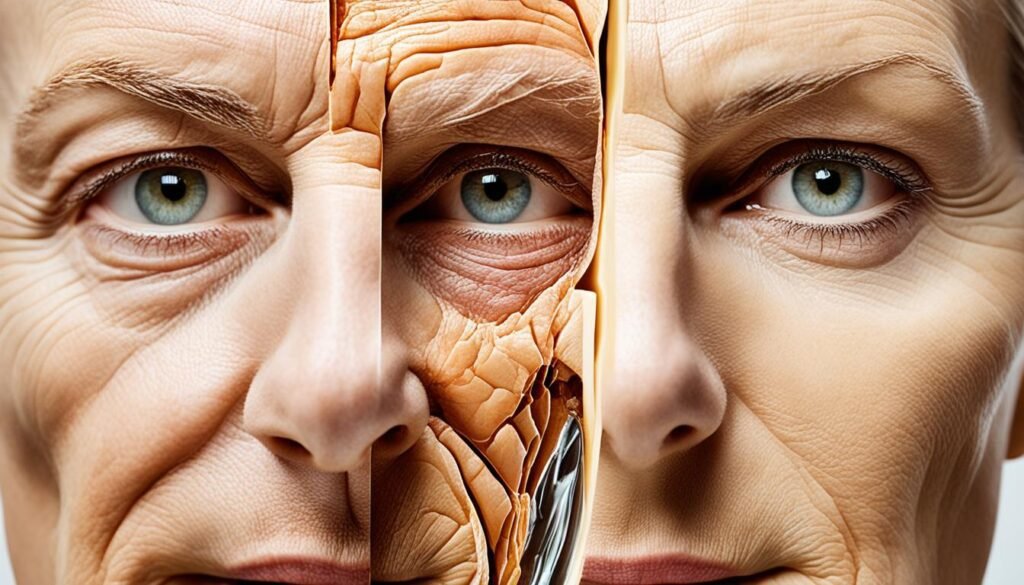
After quitting smoking, the skin undergoes several changes that promote repair and rejuvenation. One of the first improvements is increased blood flow to the skin, which allows for improved oxygen and nutrient delivery. This increased circulation stimulates the skin’s natural healing processes and aids in the repair of damage caused by smoking.
The improved blood flow also leads to increased skin cell turnover, resulting in a fresher and more youthful complexion. As new skin cells replace the old ones, the skin becomes smoother and more radiant. Additionally, the production of collagen, a key protein responsible for maintaining skin elasticity, is boosted. Collagen helps to prevent the formation of wrinkles and fine lines, giving the skin a more youthful appearance.
Quitting smoking can also help restore healthy color to the skin. Smoking restricts blood vessels, causing a pallid and dull complexion. However, once smoking is ceased, blood vessels start to dilate, allowing for improved circulation and a healthier flush to the skin. This increase in blood flow also helps to remove toxins and free radicals, preventing further damage and promoting skin health.
To summarize, quitting smoking initiates a cascade of positive changes in the skin, including increased blood flow, enhanced cell turnover, collagen production, and improved complexion. These reparative processes can help reverse the damage caused by smoking and restore the skin’s natural vibrancy and radiance.
The Aging Process Slows Down
Smoking takes a toll on the aging process, depleting the body of vital nutrients, particularly Vitamin C, which is crucial for collagen production. When you quit smoking, the production of collagen returns to normal levels, resulting in a reduction of wrinkles and an improvement in skin coloration. With the aging process slowing down, it’s like turning back the hands of time for your skin.
Throughout years of smoking, the body becomes starved of essential nutrients, leading to accelerated aging. Vitamin C plays a key role in collagen synthesis, the protein responsible for maintaining skin’s elasticity, firmness, and overall structure. When smoking is ceased, collagen production regains its usual pace, allowing the skin to repair and rejuvenate. This results in a visible decrease in wrinkles and an overall improvement in skin texture and appearance.
When the body is no longer exposed to the harmful effects of smoking, it can focus on repairing damaged cells, which leads to healthier and younger-looking skin.
Weigh the Years Against Wrinkles:
“After quitting smoking, my skin started to transform. The appearance of fine lines reduced significantly, and even my most prominent wrinkles seemed less pronounced.”
Detoxifying the skin after quitting smoking allows it to recover from years of exposure to harmful toxins and chemicals. As the body adjusts to life without cigarettes, the skin’s natural healing processes are activated, reversing the effects of smoking-induced damage.
Improving skin after quitting smoking is a gradual process that requires patience and consistency. By quitting smoking, you are giving your skin the opportunity to repair and rejuvenate itself from within. With time, you’ll notice a reduction in wrinkles, a more even skin tone, and a healthier, youthful radiance.
Healthy Color Returns

Smoking can have a significant impact on the color and appearance of the skin. The reduced blood flow caused by smoking often leads to a pale and greyish complexion. However, when you quit smoking, something amazing happens.
After smoking cessation, the circulation in your body improves, including the blood flow to your skin. This enhanced blood flow brings more oxygen and nutrients to your face, resulting in a gradual return of a healthy color. Your skin begins to regain its vibrancy and radiance, and you’ll notice a visible improvement in your complexion. It’s as if a curtain has been lifted, revealing the natural beauty beneath.
With the increased oxygen and nutrients, your skin cells can function optimally, leading to a healthier overall appearance. The dull and lifeless complexion associated with smoking becomes a thing of the past as your skin recovers and rejuvenates.
Quitting smoking is the first step towards reclaiming healthy and vibrant skin. By eliminating the harmful effects of smoking, your complexion can gradually return to its former glory.
Further Damage is Prevented
One of the significant benefits of quitting smoking is the prevention of further damage to the skin. Smoking contributes to the formation of wrinkles through repetitive facial movements like pursing the lips and squinting the eyes. When a person quits smoking early on, they provide their skin with the necessary nutrients and oxygen to rebuild collagen and prevent future damage. However, the longer an individual smokes, the more difficult it becomes to treat static wrinkles.
Quitting smoking is a crucial step in post-smoking skin repair and rejuvenation. By giving up smoking and adopting healthy lifestyle habits, individuals can mitigate the progression of skin damage and maintain a healthier complexion.
Preventive Measures to Protect the Skin
Aside from quitting smoking, taking additional steps can help further repair and enhance the skin’s appearance. Incorporating the following practices into your skincare routine can promote better skin health:
- Use SPF-rated sunscreen to shield the skin from harmful UV radiation
- Maintain a well-balanced diet rich in fruits, vegetables, and antioxidants
- Engage in regular exercise to improve circulation and boost overall skin health
- Follow a daily skincare regimen tailored to your skin type and concerns
- Consider using skincare products formulated specifically to repair and rejuvenate the skin
- Consult with a dermatologist to explore in-office treatments targeting specific skin concerns
By combining smoking cessation with these preventive measures, individuals can optimize their skin’s repair process, promote rejuvenation, and maintain long-term skin health.
How Quickly Can The Skin Recover?
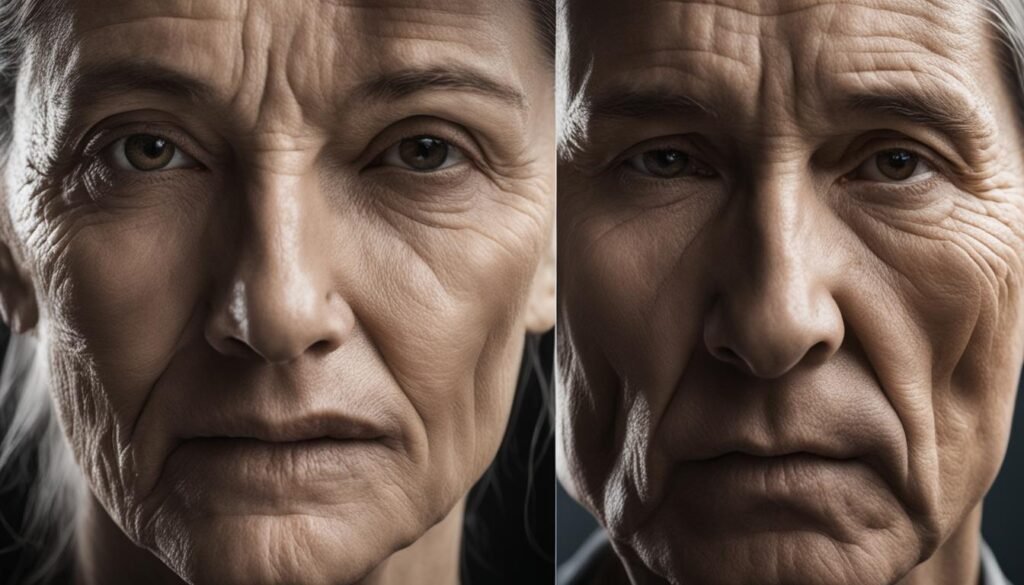
The effects of quitting smoking on the skin can be significant, but how quickly can the skin recover after smoking cessation? The rate at which the skin repairs and rejuvenates itself varies from person to person. However, many individuals begin to notice improvements in skin tone, texture, and the reduction of lines and wrinkles within a matter of weeks or months.
The skin’s recovery process is influenced by several factors, including a person’s overall health, lifestyle choices, and skincare regimen. Those who adopt a healthier lifestyle and maintain a consistent skincare routine may experience faster and more dramatic results. By providing the skin with essential nutrients, hydration, and protection from further damage, individuals can facilitate the skin’s recovery and optimize its natural healing abilities.
“I noticed significant improvements in my skin after quitting smoking. Within a couple of months, my complexion became brighter, and the fine lines on my forehead started to fade. It was incredible to see the positive changes happening to my skin!” – Jane, former smoker
During the recovery period, it is important to be patient and understanding of the skin’s natural healing process. While some changes may be noticeable early on, achieving optimal skin recovery may take time. Consistency and persistence are key. By maintaining smoke-free habits and implementing a comprehensive skincare routine, individuals can support the skin’s rejuvenation process and enhance its ability to repair itself.
Additionally, it is essential to address any other lifestyle factors that may impact skin health. This includes getting enough sleep, staying hydrated, managing stress levels, and protecting the skin from sun damage by wearing sunscreen daily. By taking a holistic approach to skincare and overall well-being, individuals can accelerate the skin’s recovery after quitting smoking.
The Skin Recovery Timeline:
While the exact timeline for skin recovery varies among individuals, the following is a general outline of what to expect after quitting smoking:
- Weeks 1-2: Improved skin hydration and increased blood flow to the skin can result in a brighter complexion.
- Weeks 2-4: Skin texture gradually improves, and fine lines begin to soften.
- Months 1-3: Deeper wrinkles may start to diminish, and the overall appearance of the skin becomes smoother.
- Months 3-6: Collagen production increases, leading to improved skin elasticity and further reduction in wrinkles.
- 6 months onwards: Continued improvements in skin quality, with a healthier, youthful appearance.
It’s important to note that individual results may vary, and the skin’s recovery process can continue to evolve over time. It’s an ongoing journey, and maintaining a smoke-free lifestyle is essential for sustaining the improvements achieved.
| Benefits of Quitting Smoking on Skin | Timeline |
|---|---|
| Improved skin hydration | Within weeks |
| Reduction in fine lines and wrinkles | Within weeks to months |
| Increased collagen production | Within months |
| Enhanced skin elasticity | Within months to a year |
| Healthier, youthful skin appearance | 6 months onwards |
Tips for Restoring Your Skin
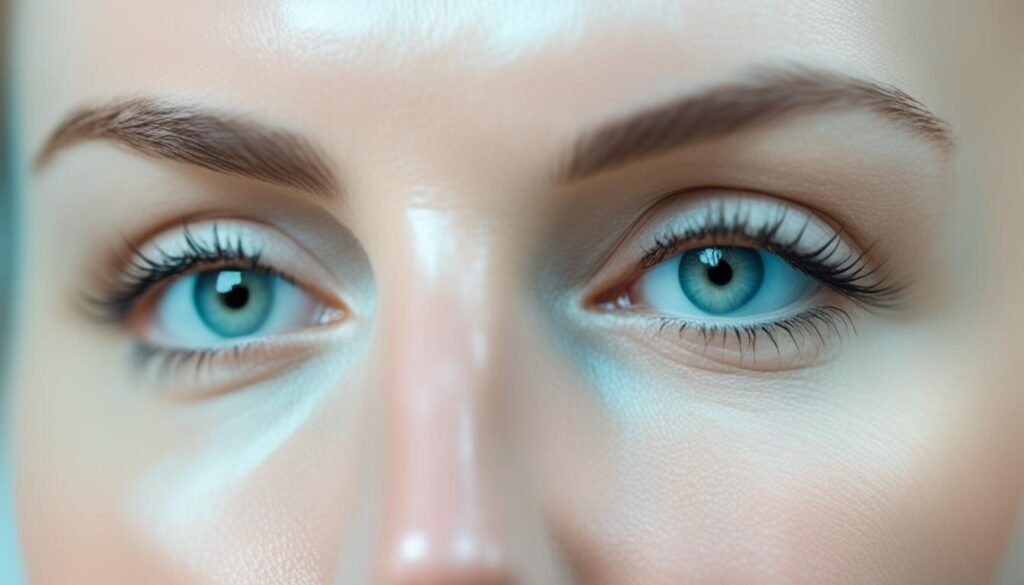
Aside from quitting smoking, there are several other proactive steps you can take to accelerate the process of skin repair after quitting smoking and promote post-smoking skin recovery. By incorporating these tips into your daily routine, you can enhance the rejuvenation and healing of your skin.
- Maintain a Balanced Diet: Consuming a nutrient-rich diet can provide your skin with the essential vitamins and minerals it needs for repair. Include plenty of fruits, vegetables, whole grains, lean proteins, and healthy fats in your meals.
- Engage in Regular Exercise: Physical activity promotes blood circulation, which can help deliver oxygen and nutrients to your skin. Aim for at least 30 minutes of moderate exercise most days of the week.
- Get Enough Sleep: Adequate sleep allows your body to repair and regenerate cells, including skin cells. Aim for 7-8 hours of quality sleep each night to support the recovery of your skin.
- Use Sunscreen: Protecting your skin from further damage is crucial during the post-smoking skin recovery process. Apply a broad-spectrum sunscreen with at least SPF 30 daily, even on cloudy days.
- Follow a Regular Skincare Routine: Establish a consistent skincare routine that includes gentle cleansing, exfoliation, and moisturizing. Opt for products suitable for your skin type and those that promote skin repair.
- Use Skincare Products Formulated for Skin Repair: Look for skincare products that contain ingredients like retinol, hyaluronic acid, antioxidants, and peptides. These ingredients can aid in the repair and rejuvenation of the skin.
- Consider In-Office Dermatology Treatments: Dermatology treatments such as chemical peels, microdermabrasion, laser therapy, and dermal fillers can be effective in targeting specific concerns and accelerating the skin’s repair process. Consult with a dermatologist for personalized recommendations.
By implementing these tips alongside smoking cessation, you can optimize the recovery of your skin, improve its texture, and restore a healthier and more youthful appearance.
Conclusion
Quitting smoking is a crucial step not only for overall health but also for the repair and rejuvenation of the skin. When individuals stop smoking, they can expect to see improvements in their skin texture, as well as a reduction in wrinkles and lines. By quitting smoking, the body’s collagen production is restored, leading to a healthier complexion and a more youthful appearance.
To optimize the skin’s recovery process, it is important to complement smoking cessation with proper skincare and healthy lifestyle choices. This includes following a balanced diet, engaging in regular exercise, getting enough sleep, and using sunscreen to protect against further skin damage. Establishing a regular skincare routine with products specifically formulated to repair the skin can also aid in the rejuvenation process. For targeted concerns, individuals may consider in-office dermatology treatments.
Remember, the path to skin repair and rejuvenation after quitting smoking may vary for each individual. Factors such as overall health, lifestyle choices, and skincare regimen can influence the speed of recovery. With commitment and patience, the skin can recover its natural vibrancy and glow, making the decision to quit smoking a worthwhile investment in both health and beauty.
FAQ
How does smoking affect the skin?
Smoking exposes the skin to over 4,000 harsh chemicals, leading to a range of skin issues such as dryness, sagging, lines and wrinkles, warts, age spots, and even skin cancer. The toxins in cigarettes prevent proper oxygen, vitamin, and nutrient absorption, causing visible damage to the skin.
What happens to the skin after quitting smoking?
After quitting smoking, the skin undergoes several changes that promote repair and rejuvenation. Blood flow to the skin increases, allowing for improved oxygen and nutrient delivery. This leads to increased skin cell turnover, collagen production, restoration of healthy color, and prevention of further damage.
Does quitting smoking reduce wrinkles?
Yes, quitting smoking can help reduce wrinkles. Smoking depletes the body of essential nutrients needed for collagen production, contributing to the formation of wrinkles. When a person quits smoking, collagen production returns to normal, resulting in a reduction in wrinkles and improved skin coloration.
Will quitting smoking improve my complexion?
Yes, quitting smoking can improve your complexion. Smoking causes a pale and greyish complexion due to reduced blood flow to the skin. However, after quitting smoking, circulation improves, and healthy color returns to the face. With increased oxygen and nutrients, the skin regains its vibrancy and radiance.
How long does it take for the skin to recover after quitting smoking?
The rate at which the skin recovers after quitting smoking may vary for each individual. However, many people start seeing improvements in skin tone, texture, and the reduction of lines and wrinkles within a matter of weeks or months. The skin’s recovery process is influenced by factors such as overall health, lifestyle choices, and skincare regimen.
What else can I do to restore my skin after quitting smoking?
In addition to quitting smoking, there are other steps you can take to restore and improve the skin. These include maintaining a balanced diet, engaging in regular exercise, getting enough sleep, using sunscreen to protect against further damage, following a regular skincare routine, using skincare products formulated to repair the skin, and considering in-office dermatology treatments for targeted concerns.

